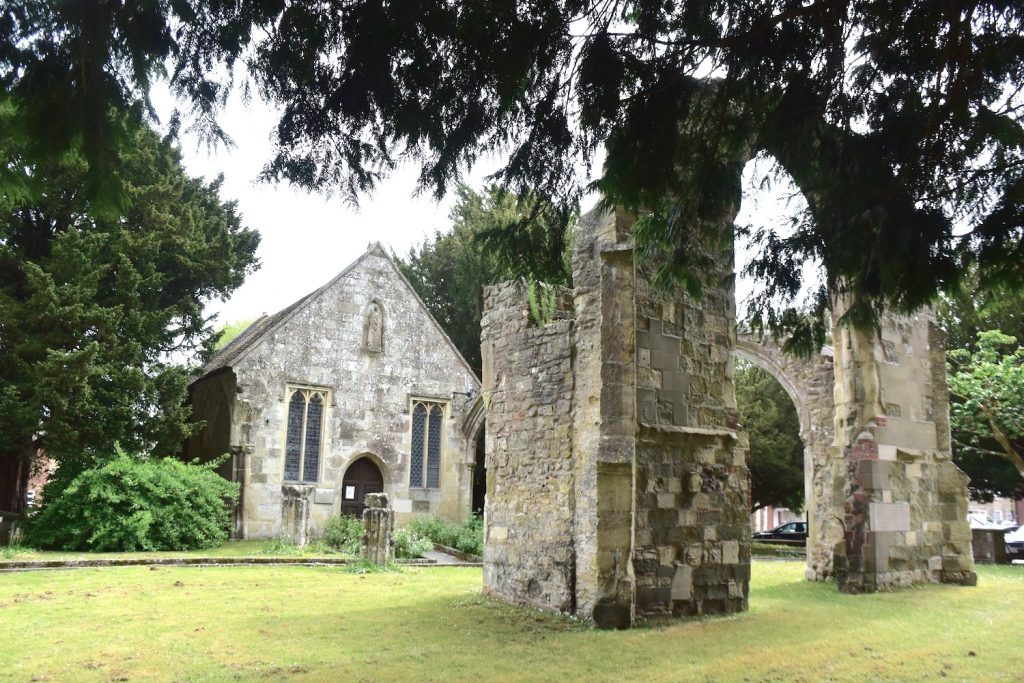
This post is adapted from my book, King Alfred: A Man on the Move, available from Amazon. It would be great if you could support this project by purchasing a copy.
Alfred had been king for just one month after his elder brother, King Æthelred had died a short time after the battle at Meretun. The Anglo-Saxon Chronicle tells us that at Wilton Alfred had been fighting with a small troop against the entire raiding Viking army. It is perhaps therefore no surprise that Alfred lost. Asser tells us that we should not be surprised at the small size of Alfred’s army because many of his troops had been killed in the previous battles of the same year (Reading, Ashdown, Basing, Meretun and other unnamed battles).
The fact that the Vikings won must have been hugely significant. They were already holding Reading, and possibly Basing as well, and later in 871 the Anglo-Saxon Chronicle records that they had left what appears to have been their main base at Reading and were in London with the Mercians after having “made peace” with them. This Viking army then moved to Northumbria and then to Torksey in Lincolnshire and eventually drove out Burhred, the King of Mercia. If King Alfred could have defeated the Vikings at Wilton, the path of history would surely have been very different.
Wilton, west of Salisbury, has been described as a royal seat and the main town of the shire of Wiltunscir. Indeed, Wilton has been stated to be “the royal seat” of Wessex, before Winchester took over that role . However, there is no mention of Wilton in Alfred’s will, and neither the Anglo-Saxon Chronicle nor Asser mention this to be a royal site. It is possible that it was a royal site before or after the time of King Alfred.
It has been suggested that the royal location could be under what is now Kingsbury Square, with the place name being a clue, and it has also been considered likely that Wilton House is on the site of a Benedictine nunnery founded by King Alfred. Indeed, the 1880 Ordnance Survey map states that Wilton House is on the site of Wilton Abbey.


Wilton had the potential to be a strategic location because it is close to where the Rivers Wylye and Nadder meet, whilst also being close to various trackways and a Roman road that led to Dorchester or Badbury Rings (near Wimborne), in Dorset.
Asser describes the battle as having taken place at a hill called Wilton on the south bank of the Wylye. This points primarily the area around Wilton House and the former abbey, or possibly the site of the current town centre. It is unclear from the evidencewhether the Vikings had already taken Wilton by the time that the battle took place. If this was the case Alfred may have had to approach from the north west because of the confluence of the rivers Nadder and Wylye. The approach from the north west would also have been an option for the initial Viking occupation of this site if it was they who had got there first but, because we know that they used waterways, they could have come up the Avon and then the Nadder. Alternatively, they could have occupied the site using a combination of land and water-based forces. However, Gaimar indicates that the Vikings found Alfred at Wilton ( a Wiltone l’unt trove.) i.e. that Alfred was there first. If this was the case then Alfred was perhaps lucky to escape as there was the potential for his small troop to be hemmed in between the Wylye and the Nadder by the entire raiding army.


This was the last recorded battle in a very busy year. The Anglo-Saxon Chronicle tells us that nine battles were fought in 870 – 871. However, only six are named (Englefield, Reading, Ashdown, Basing, Meretun and Wilton) and no additional locations are mentioned in other sources. It is therefore of note that there are three battles missing from the written record.
It is worth pointing out that the Vikings also came to Wilton in 1003, when they raided it and burned it down (see Anglo-Saxon Chronicles E and F).
Wilton is a pretty place to wander round and the grounds of Wilton House are regularly open to the public. You can explore a stretch of the Nadder and also a branch of the Wylye.
There is much more about the travels of King Alfred in my book, including maps and references. Click or tap on the image below to learn more about the book.

